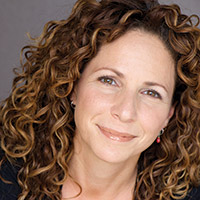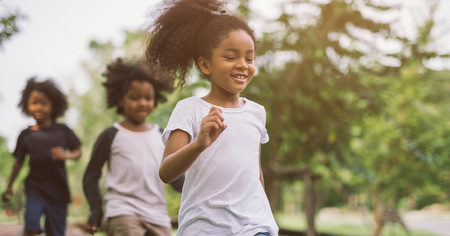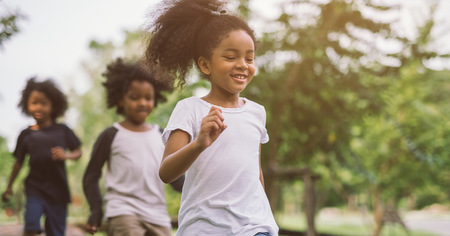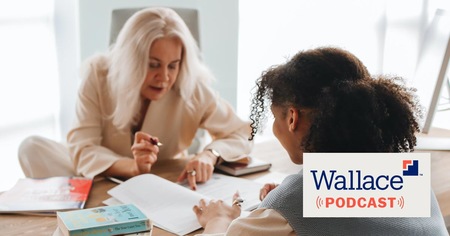I knew I wanted to write about social-emotional learning, but I was feeling too emotional about it as it became more of a diary entry than an article. That's when my WRiTE BRAiN guardian angel/Director of Program Development Rhona Cleary, popped her head into my office and said, "I jotted a few things down that might help you get going."
What she "jotted down" was more perfect than the word swirls in my curls. And so, I yield my writing lines to the woman in the office next to mine.
—Meredith Scott Lynn, WRiTE BRAiN Founder and CEO/After School Advocate/Actress You've Seen in Stuff
As a former afterschool facilitator, I have long been aware of the important personal development happening in the hours between school and home. However, it's only in recent years, since this vital, complex—and at times invisible—form of student development has been given a name: Social-Emotional Learning (SEL). This has helped us identify and cultivate it; that the key role it plays in long-term student success has begun to be recognized in education news and state guidelines.
While developing WRiTE BRAiN's latest SEL-focused programs, I sifted through the abundance of SEL-related research online and the message that emerged was clear: Authentic SEL is more easily and organically implemented in out-of-school time—rather than during the school day, when educators are scrambling to cover mandated curricula and prepare students for testing. What isn't so clear from all this research is the how. Most afterschool educators are encouraged to integrate SEL into their programs and often given recommended standards to meet, but without being offered concrete and easily actionable strategies.
So, let's demystify the mighty acronym for a moment.
The root of all successful SEL programming is this: Students need to feel safe and supported in an environment that is conducive to open communication, constructive collaboration and peer and self-awareness.
Many afterschool programs are already working toward creating such an environment. By adding a few simple activities weekly throughout the semester—all focused on encouraging students to think and communicate in new and purposeful ways, without fear of getting it wrong—you will see your students' social-emotional development skyrocket.
ACTIVITY A
Pair & Share
Divide students into pairs—each, ideally, with someone they don't know well. Give each student an index card or a piece of paper and a pencil or pen. Tell them you're going to start a sentence they are going to finish on their card. Make it a game! (See prompts below).
Say the prompt sentence aloud. Tell your kids they have two minutes to jot their ideas/thoughts/feelings down and that the pressure is off to "get it right." Then, start a timer.
When the two minutes are up, they will pair-share with each other what they wrote and discuss the topic for two or three minutes, sharing their respective responses and having a conversation.
After the time is up, ask students: Did you find it easy to fill the time or did you run out of things to say? Did you listen respectfully when your partner shared? Did you speak more or less than your partner? Did you make eye contact while they listened? Discuss the challenges of maintaining eye contact.
Repeating this activity over time will help students become more conscious communicators and get to know their peers better. Have students create new discussion prompts for each week!
Suggested prompts:
- "If I could go anywhere in the world, I would go to ..."
- "If I could go anywhere in the universe, I would go to ..."
- "If I were an animal, I would be a ..."
- "If I were an object, I would be a ..."
- "My favorite memory is ..."
- "My least favorite memory is ..."
- "My parents are people who ..."
- "Something I couldn't live without is ..."
ACTIVITY B
TV Talk Show
Have students pair up to interview one another with questions about their interests and talents. Student A will interview Student B and take notes, then they'll switch. Set a timer for around 10 minutes per interview—20 minutes per pair. Tell them to name their TV Talk Show.
After the interviews, each student will introduce their partner to the rest of the group and explain why they are uniquely awesome. Tell them to brag about each other! Then the "host" can invite questions from the group for the interviewee to answer.
Using a phone or tablet, film the final presentations and remind students to make eye contact with each other and their audience. Watch a different interview video together each week!
ACTIVITY C
Shift Perspectives
Tell students to think about the most memorable thing that happened in their week. Now, have them write about it from the perspective of someone else who was there—it could be someone they know well, a stranger observing the scene, or even a fly on the wall, but it must be from a specific point of view. Encourage them to explore the ways their own words or actions had an impact on the person or thing whose perspective they're writing from.
The best part about implementing SEL activities OST? You reap the benefits, too!
The conversations prompted by each of these activities can provide valuable learning opportunities for everyone involved. I don't think I need to tell anyone reading this article that students can be our greatest teachers!
Courtesy of WRiTE BRAiN. To learn more and access additional free SEL-building resources, please contact Rhona Cleary.
Pictured above: "Students connect and share as they 'Story Swap' in the S.W.A.G. After School Program in Douglas, WY".
 Meredith Scott Lynn, WRiTE BRAiN Founder and CEO/After School Advocate/Actress You've Seen in Stuff
Meredith Scott Lynn, WRiTE BRAiN Founder and CEO/After School Advocate/Actress You've Seen in Stuff




